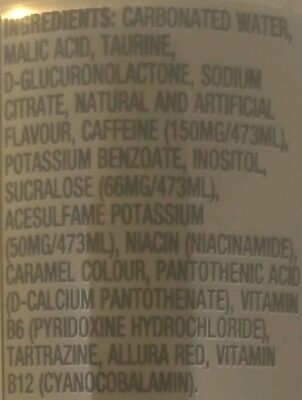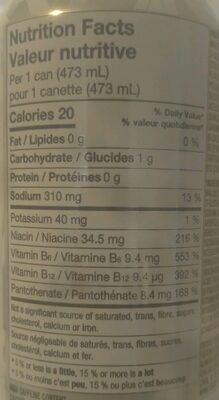Sugar Free Energy Drink - Joker Mad Energy - 473 mL
This product page is not complete. You can help to complete it by editing it and adding more data from the photos we have, or by taking more photos using the app for Android or iPhone/iPad. Thank you!
×
Barcode: 0061500128250 (EAN / EAN-13) 061500128250 (UPC / UPC-A)
Common name: Low Calorie Sugar Free Energy Drink
Quantity: 473 mL
Brands: Joker Mad Energy
Categories: Beverages, Energy drinks
Labels, certifications, awards: Low or no sugar, Kosher, MK Kosher, No sugar
Stores: Circle K
Countries where sold: Canada
Matching with your preferences
Environment
Packaging
Transportation
Report a problem
Data sources
Product added on by kiliweb
Last edit of product page on by binzyboi.
Product page also edited by roboto-app, yuka.sY2b0xO6T85zoF3NwEKvlh13df3fsGv9EzD4lneB7NqLIpm3OeNY2bH5FKs, yuka.sY2b0xO6T85zoF3NwEKvlhFOffvQny7OOxLmkHaK286KHMWwRIpe_6XbDKs, yuka.sY2b0xO6T85zoF3NwEKvlldMb-uFgi_9bwTks3CI9s-_M83qUM9_yIvZbqo, yuka.sY2b0xO6T85zoF3NwEKvlmFaSNzfhBf8LB7fpV-a7NOAF830U_ZXs5TCE6s, yuka.sY2b0xO6T85zoF3NwEKvlmJhYsOCvQDWHhj4t2arm_iMCo3Ef-ty2YarEqo, yuka.sY2b0xO6T85zoF3NwEKvlnRiD8TOng_4az3unUGN2PeRd6PwO9R5-NTLHKo.










